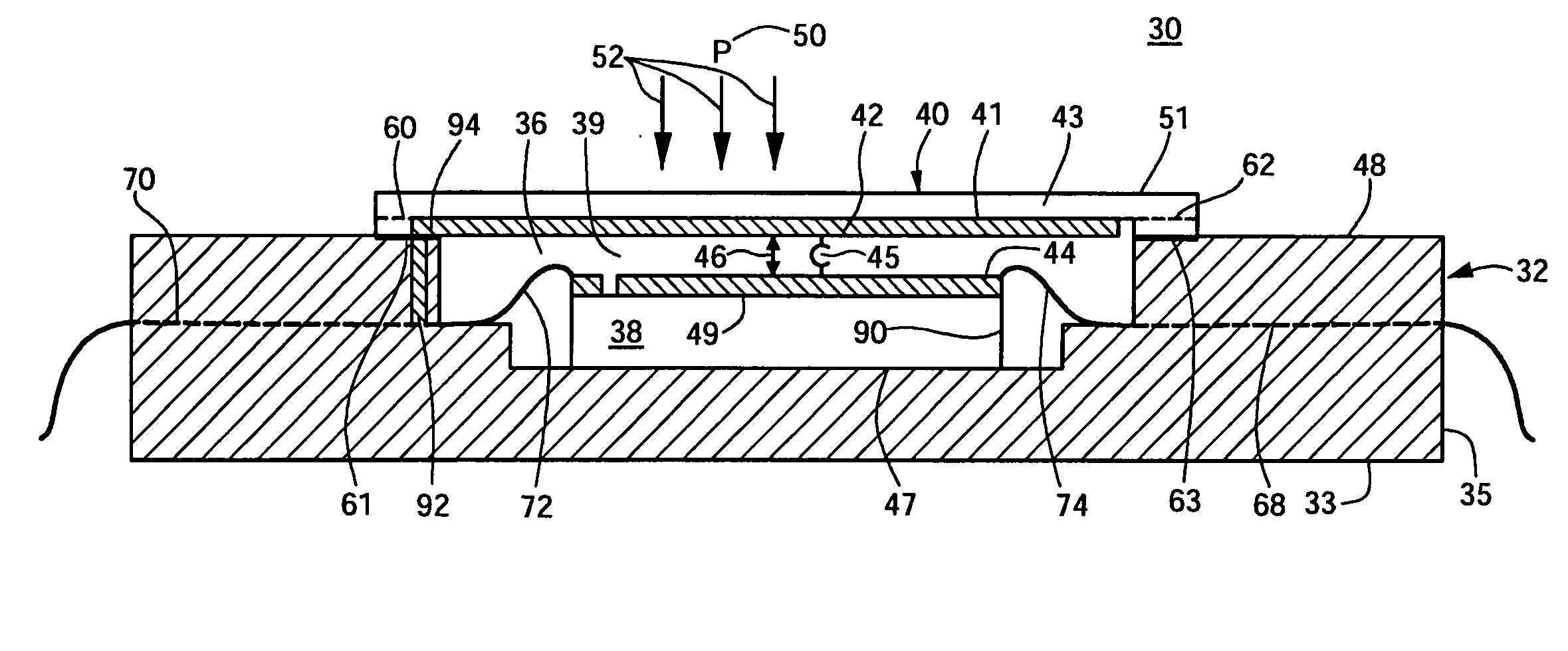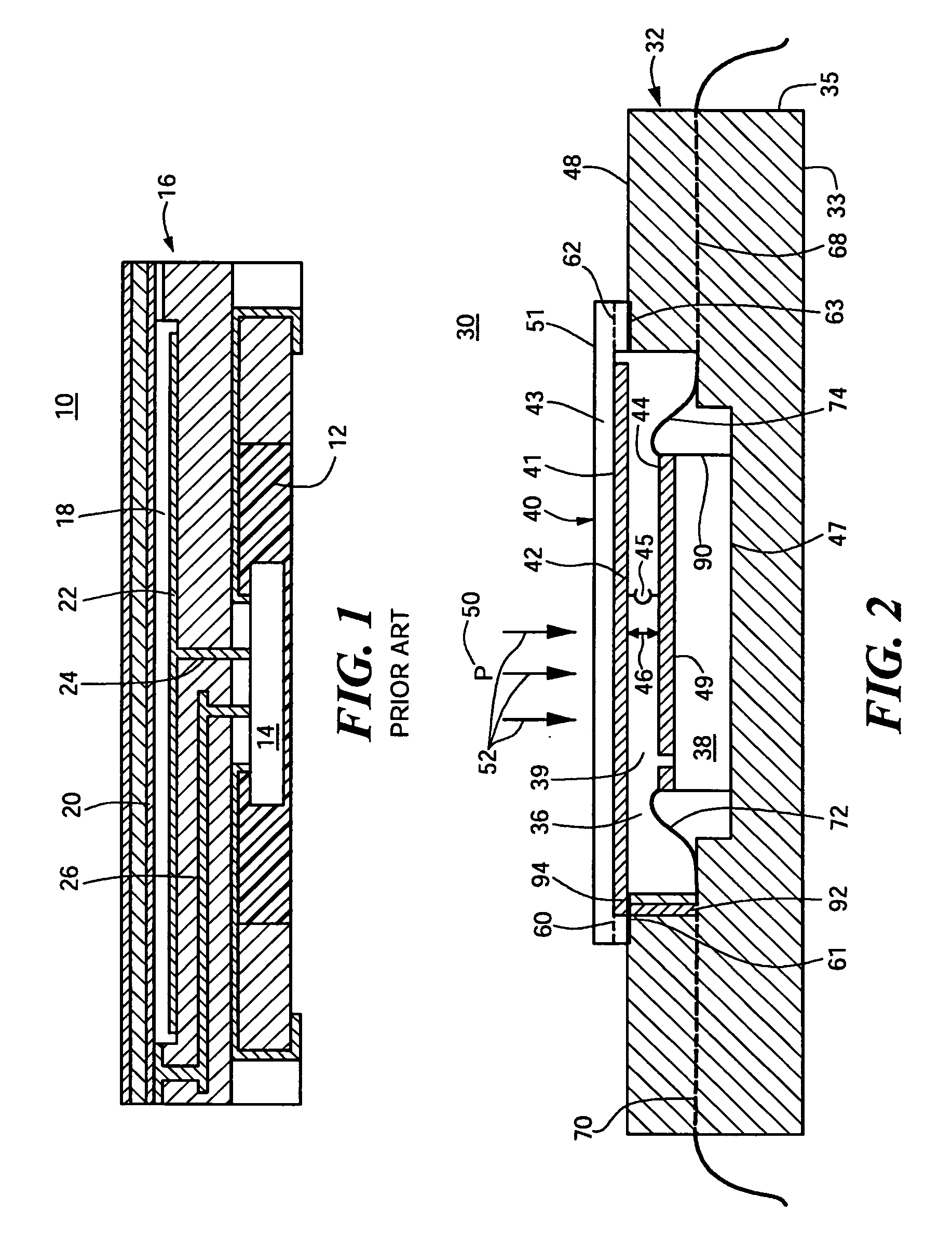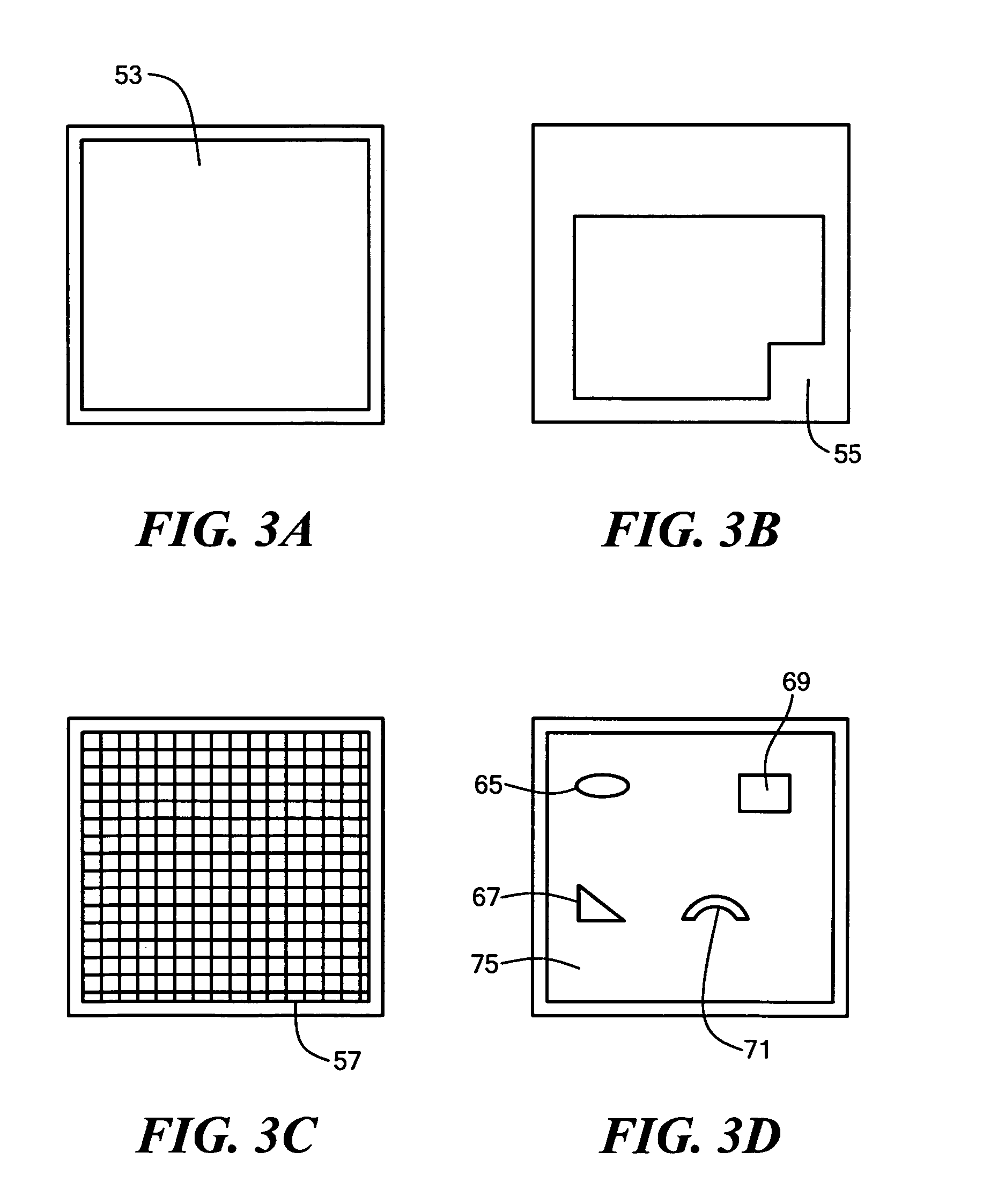Capacitive sensor
a capacitive electrode and capacitive sensor technology, applied in the field of capacitive electrodes, can solve the problems of limiting battery life, inaccurate measurement, and ineffective protection of capacitive electrodes and electronic circuitry from hostile environmen
- Summary
- Abstract
- Description
- Claims
- Application Information
AI Technical Summary
Benefits of technology
Problems solved by technology
Method used
Image
Examples
Embodiment Construction
[0049]Aside from the preferred embodiment or embodiments disclosed below, this invention is capable of other embodiments and of being practiced or being carried out in various ways. Thus, it is to be understood that the invention is not limited in its application to the details of construction and the arrangements of components set forth in the following description or illustrated in the drawings.
[0050]As discussed in the Background section above, conventional capacitive-type pressure sensors, such as conventional capacitive pressure sensor 10, FIG. 1, as disclosed in Japanese Patent Application No. 2002039893 cited supra, overcomes the problem associated with contaminants affecting the capacitive electrodes with hermetically sealed cavity 18. Hermetically sealed cavity 18 includes capacitive electrode plates 20 and 22 which form a capacitive measuring device within sealed cavity 18. Capacitive pressure sensor 10 also includes cavity 12 which accommodates die 14. Sensor 10 also inco...
PUM
| Property | Measurement | Unit |
|---|---|---|
| thickness | aaaaa | aaaaa |
| capacitance | aaaaa | aaaaa |
| conductive | aaaaa | aaaaa |
Abstract
Description
Claims
Application Information
 Login to View More
Login to View More - R&D
- Intellectual Property
- Life Sciences
- Materials
- Tech Scout
- Unparalleled Data Quality
- Higher Quality Content
- 60% Fewer Hallucinations
Browse by: Latest US Patents, China's latest patents, Technical Efficacy Thesaurus, Application Domain, Technology Topic, Popular Technical Reports.
© 2025 PatSnap. All rights reserved.Legal|Privacy policy|Modern Slavery Act Transparency Statement|Sitemap|About US| Contact US: help@patsnap.com



